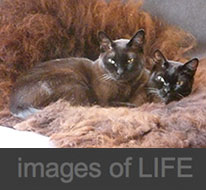DESIGNING A HOUSE ~ DESIGNING A START-UP COMPANY
Is a Start-up anything at all like a residential design project? Analogies again? Yes, and I think I can make this one work….
This is some of what I learned from my experience in the Start-up universe, which has influenced INCLINEDESIGN Architectural and Interior Design Solutions, and made it successful.
BUILD A GREAT TEAM
That’s a no-brainer, as our success as designers is so totally dependent on the team we put together; whether to renovate or build anew.
The contractor or site manager can make or break a project. Some clients insist we do their site management; more stress, but more control.
The subs or trades are what make everything successful, by implementing the design correctly, and working together. By working together I don’t just mean just “getting along”, but anticipating the job sequence. When a trade doesn’t anticipate or understand job sequence, the drywall gets installed over where the electrical outlets go (it happens…). However, today with email or SMS, we can eliminate much of this, as the drywaller can be told that the electrician is next up, so review the plans online;….. everyone can be informed on a need-to-know basis what, when, and who is required.
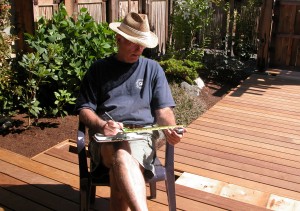
…….please, just double check the measurement against the plans….
A blog about a specific project is ideal for client updates and can both acknowledge and inspire the team members, and showcase the project as it evolves, giving each participant a sense of their contribution to the whole. My design partner, James is blogging about a Riva speedboat restoration he is carrying out, and after only five posts has already created quite a community around the project.
When building a Start-up team in today’s global economy, I believe it IS important to bring together diverse languages and cultures. Though we don’t set out to do this specifically in a residential project, it just seems to happen, and can add talent & expertise to the mix.
WORK SMART – THE 6 P’S
Prior Planning Prevents Piss Poor Performance
Planning, Planning, Planning & more Planning. Sounds boring, but actually it is fun (sort of….).
We create a Design Philosophy for each project, collaborating with our clients to insure amongst other things, consistency of design, which we do well. Collaboration is key.
We also create a Road Map for each project; if you don’t know where you are going you can’t get there! With good planning, we can pick a route that is the shortest from A to Z, even though it may go via G & S, and be running several tracks at a time. This means several trades working simultaneously on different parts of a project; this can be done efficiently, and work very well, with impeccable planning & scheduling.

This steel window took 7 of the crew to lift; yet it was installed easily by the contractor alone. At the same time the crew closed in the roof. That’s working SMART.
Today we no longer lay out a one-dimensional, sequential plan; things have to happen so much faster, whether it is bringing a product to market or a residence ready for occupancy.
SOLID FOUNDATIONS, & INFRASTRUCTURE THAT WORKS
Everyone knows about solid foundations when building a house: the foundation supports the structure, the structure supports the roof.
The Infrastructure itself gets less attention, because it’s not usually visible; out of sight = out of mind. This is something I focus on, as it is what makes everything “work” in a house. I review the accuracy of all plumbing, heating, A/C, wiring, lighting, and switching plans, as well as the multimedia, computer, phone, and security networks. I run a check to see if the layouts are compatible with our client’s lifestyle and with each other; especially if several other specialists have been brought in to design parts of the infrastructure.
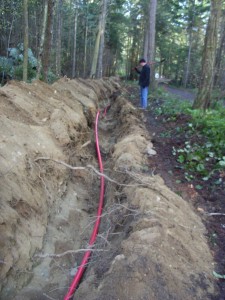
…..ooops they forgot to lay the phone line with the electrical conduit.
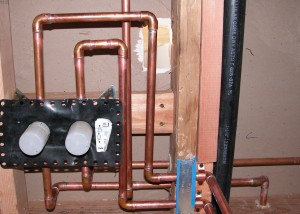
Documenting all hidden infrastructure, just in case……and yes, Copper is still used in some projects.
So what is the infrastructure in a house analogous to in a Start-up? My question is going to take someone like designer Mellissa Galt to answer succinctly…..
BE FLEXIBLE. EVEN BETTER; BE ANTICIPATORY
This involves quick thinking when something doesn’t work, and maybe even quicker thinking when it works better than expected It means cut your losses sooner rather than later. This can be painful in either a start-up or a design project, as it will appear you are moving backwards! Not easy for the entrepreneur CEO to tell the team to change direction, or for the designer to tell the crew and the client we have to rip it out and start over! The way I’ve leaned to deal with this is; don’t perceive plans as set forever in stone, instead they are guidelines, which can be modified, changed or improved if required, to move a project forward to a successful conclusion.
Residential projects can be an emotional roller coaster just the way a start-up is, so the key is not to be overly discouraged when things go off track temporarily.
When changing direction, there usually has been a mistake, so part of this strategy of flexibility is being flex enough to spot mistakes (early would be nice….), or listen carefully and with an open mind when someone else does. And then learn from them.
My biggest mistake when designing my first companies was doing the “perfect product introduction”, and thinking I had a company. Thank you Bob Goff, mentor & founder of the Sierra Angels, for pointing out the shortcomings of this plan all those years ago. In residential design it’s all too easy to get fixated on just the “fabulous” design, and forget the rest; implementation, infrastructure; those things.
FLOW CASH
I have seen some gorgeous cost spreadsheets, almost an art form, generated by both start-ups and residential construction companies. Unfortunately, they often have no relationship to reality. Cost projections on a project should be guidelines; of course this does not mean you should not cost things out as accurately as possible.
When doing standard construction there is not much challenge to get the costs right, especially if you are familiar with going rates of trades and materials.
However, the challenge is when you do one-of-a-kind design, or add innovative design details. You don’t have a benchmark, and often the actual implementation gives you the only “real” cost, and can be several times higher then what you anticipated. (you’ve all heard of “time & materials”, right?)
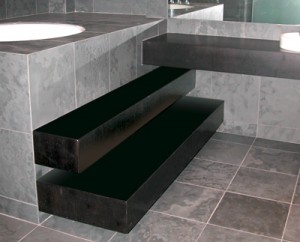
Floating steps & vanity with no visible means of support. Expensive but worth it! (Skyloft during construction)
Contingencies are all very well for situations like this, but no substitute for good communication with the client. The client who wants “different” needs to understand the implications! Part of our job.
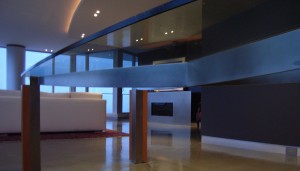
We are passionate about the opportunity of designing some or all of the furniture as part of a residential project.
Is there any similarity of accountability between us as designers and our clients, and a start-up company with their angel or VC?
MANAGE TIME
In mentoring, this is one of the most challenging aspects I encounter. Yes, you can do 80 hours work in a 40 hour work week, and sleep as well. It’s called time management and realistic scheduling. Some “technically savvy” construction companies with elaborate computer programs love to create colorful and complex timelines to present to the client. Seldom have I seen one that is realistic about scheduling…..
Sometime ago I went with a client to meet with the contractor, as the job was already 9 months late (I came late to the mix unfortunately). Occupancy was assured for “the end of March”. I looked at the colorful timeline, laughed, and pointed out (to everyone around the meeting table) that I would estimate the end of June if everything went right, and nothing had so far….that was double by my estimate. Shortly after, contractors were changed (not an easy decision but without it, profitable exit strategy would not have been an option: the current path made moving in ever unlikely, and selling the house to recoup investment even less so) and my client moved in on – you guessed it – June 20.
How does this all relate to how INCLINEDESIGN manage their business? We cost and schedule very efficiently, certainly, however we fail in so far as there is a certain amount of time we invest in any project for which we don’t get paid!
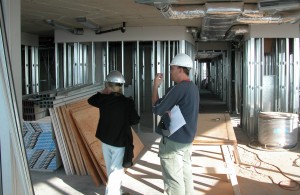
There is no substitute for checking up with the site manager in person. Hard hat, replaces the red hat.
MULTIFACETED
As part of my online profile, I bill myself as a multi-faceted entrepreneur. With both James and myself the principals of INCLINEDESIGN, our varied expertise really pays off for our clients.
In another career I wrote, produced, and filmed environmental documentaries for TV; filming on remote locations for many months at a time. When asked by interviewers what I did, my answer was “I write, edit, film, edit, produce, edit, and deliver unprocessed film, and clean the maggots from the campsite cooler”. That’s just what you have to do in a small company, and especially a start-up (editing, and most often cleaning up).
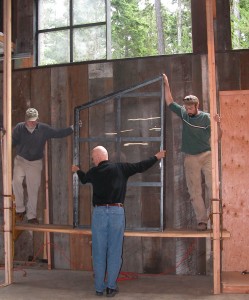
This designer can do just about anything….and if needed gives the extra hand…..or two.
MARKETING
In our design business we are fortunate that when a client contacts us to do their residential design, they are usually already sold on us to do their project. However, once a project starts and we are intensively collaborating with our client, we are marketing ourselves subtly but continuously, using all the communication and presentation skills we developed while in the corporate space. I commented on this after Laura Schaub’s post about Design Drawing Diversity.
Our clients are very successful and busy individuals, who have selected us for being self-motivated, understanding their design criteria and implementing fast. One of my favorite site managers instructed me to present only one option (“remember, the client already loves your design”), and only have Plan B ready in case. We only had to execute 3 plan B’s on that project; a frame-up renovation of 6000sf.
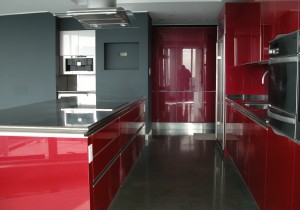
When there is a trust between designer and client ……………..design happens.
It would seem, in terms of the analogy at hand, we are (or appear to be) somewhat less focused on sales and marketing then we should be, and why do you think that is?
INNOVATE
If you don’t have a product or service that sets you apart, can you really be successful? Ask any of our clients, we are available 24/7. And because they know this and know that when they need an answer they get it, we have never felt taken-advantage of. We understand the kind of 24/7 global business climate our clients operate in.
Our clients always expect us to come up with designs to surprise them. New ideas they would otherwise never have thought of.
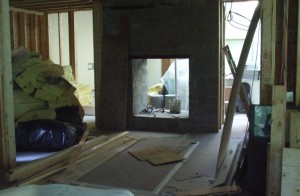
Client loved my suggestion of creating a VERY large see through fireplace between the living room & kitchen.
Most of our design tends to the Minimal – where less is more. So why does less, cost more? James says this is because simplicity is elegant, and elegant is hard to achieve, and he should know! And with our focus on “going green”, that may cost more upfront, while we hope saving over the long term.
INVESTMENT
Do our clients believe our residential design is a good investment?
Our clients are investing in their lifestyle when they retain us, however that “resale” word is always lurking in the back of everyone’s mind….
I measure success by a client telling me….. “your design really works for me, for our family, for entertaining, team cooking” ……. “It’s just the way you said it would be” …… “I keep discovering new things about your design” ….. “everyday a new discovery, a new experience”…..
And when the house sells for more than anyone anticipated, that feels good too…to everyone.
It has been an interesting excursion for the last 5 years into high-end residential design, though it is really nothing new, and has been a second career track for me on and off for over 25 years. My design partner James, studied architecture, then changed direction to product design & advertising, and then followed a career on both the agency and the corporate side. He always kept one hand in architectural design though, designing restaurants and commercial spaces, whenever a project was simply irresistible.
What added knowledge, expertise and skill-sets do you think we have gained from our recent experiences designing high-end residences, which may be transportable to designing a start-up company?
CASUDI










